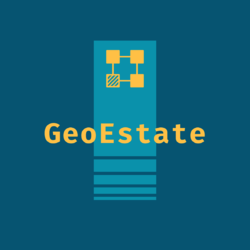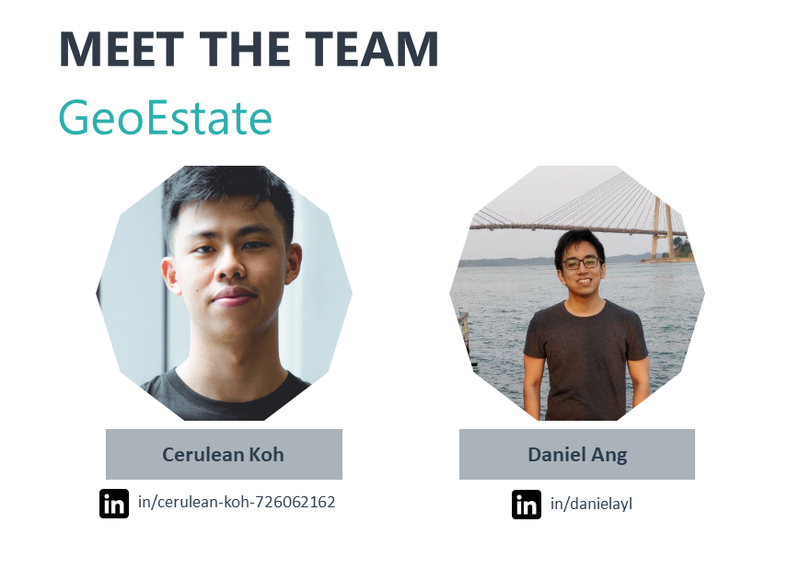Difference between revisions of "GeoEstate"
| Line 45: | Line 45: | ||
Our project aims to shine light on future prices of landed property by providing an accurate geographically weighted regression model using factors such as location, tenure and type of sale to predict future landed property prices. Now, aspiring owners can filter by location and type of house, and easily see what their dream house would be worth in several years. Alternatively, owners of landed property who plan to sell can see if they should do so sooner or later. | Our project aims to shine light on future prices of landed property by providing an accurate geographically weighted regression model using factors such as location, tenure and type of sale to predict future landed property prices. Now, aspiring owners can filter by location and type of house, and easily see what their dream house would be worth in several years. Alternatively, owners of landed property who plan to sell can see if they should do so sooner or later. | ||
| + | |||
| + | <br/> | ||
{| style="background-color:#ffffff ; margin: 3px 10px 3px 10px; width="80%"| | {| style="background-color:#ffffff ; margin: 3px 10px 3px 10px; width="80%"| | ||
Revision as of 15:39, 21 March 2019
| The Team |
| Project Description |
Our project aims to shine light on future prices of landed property by providing an accurate geographically weighted regression model using factors such as location, tenure and type of sale to predict future landed property prices. Now, aspiring owners can filter by location and type of house, and easily see what their dream house would be worth in several years. Alternatively, owners of landed property who plan to sell can see if they should do so sooner or later.
| Project Motivation |
Landed Property has always been seen as something for the wealthy, with only the top 5% of Singaporean earners being able to afford it. For Singaporeans who aspire to own such property, there are currently many available options – Terrace Houses, Semi-Detached Houses, Corner Terrace Houses, Detached Houses and many more. Due to fluctuating property prices, it may be difficult for an aspiring landed property owner to properly plan and budget to get their dream house. Furthermore, existing owners may be stressed about when the best time to sell is.
| Data sources |
| Data | Source | Data Type/Method |
|---|---|---|
| 2014 Master Plan Planning Subzone (Web) | Data.gov.sg | SHP |
| URA Private Residential Property Transactions | Ura.gov.sg |
CSV |
| Pre-School Locations | Data.gov.sg | KML Converted to Shapefile |
| Primary/Secondary School Locations | Data.gov.sg | CSV Data was geocoded using OneMap API |
| MRT/LRT Station Locations | LTA Datamall (Direct Download) |
SHP |
| Supermarket Locations | Data.gov.sg | KML Converted to Shapefile |
| Shopping Mall Locations | Wikipedia | Text Data was converted to Shapefile after geocoding using OneMap API |
| Park Locations | Data.gov.sg | KML Converted to Shapefile |
| Sports Facilities Locations | Data.gov.sg | KML Converted to Shapefile |
| Hawker Centre Locations |
Public Food Centres: |
1: KML - Converted to Shapefile |
| Data Transformation |
| Literature Review |
1. A Spatial Analysis of House Prices in the Kingdom of Fife, Scotland
(By: Julia Zmölnig, Melanie N Tomintz, Stewart A Fotheringham)
Aim of Study: to analyse the spatial variations in house price adjustments due to economic conditions, and to quantify and describe patterns in the variations of house prices in the study area of Fife, Scotland
Methodology:
Spatial Interpolation Technique - using points with known values to estimate values at other unknown points. There were 3 main methods being used:
- Diffusion Interpolation with Boundaries
- Inverse-distance weighting
- Deterministic ordinary Kriging (Most accurate)
Learning Points:
- House price hot spot will migrate from year to year and multiple models is required if the study duration spans over multiple years
- Economic downturn actually leads to increase of property prices despite more supply from unemployed people
Areas for Improvement:
- Data lacked information such as the size and type of real estates which while could be approximated via interpolation, overall still hurts the accuracy of the model
- Using a different model such Geographically Weighted Regression (GWR) to identify spatial patterns apparent in the study area.
2. Statistical analysis of the relationship between public transport accessibility and flat prices in Riga
(By: Dmitry Pavlyuk)
Aim of Study: to examine the relationship between public transport accessibility and residential land value in Riga, Latvia
Methodology:
- Geographically Weighted Regression (GWR)
- Global Regression Model
Learning Points:
- Within city centre, accessibility has no significant relationship on flat prices as the city centres are already rich in transport route and new routes have a diminishing impact
- For the population with higher income, higher public transport accessibility will possibility lead to lower property prices
- Overall GWR performed significantly better than global regression
- Variable that have no significant relation in one model might be significant in another. For example, the influence of the first floor on the price was insignificant in the global regression model, it was a local dependency in GWR.
Areas for Improvement:
- Overall limited impact by transport which was the main focus of the study
- Possibility of using Manhattan distance to compute the actual distance travelled rather than straight line distance
| Approach |
- Geographically Weighted Regression (GWR)
| Project Prototype |
| Tools & Technology |
| Project Timeline |
| Challenges |
| No. | Key Challenges | Mitigation |
|---|---|---|
| 1. | Unfamiliarity with R, its packages and R Shiny |
|
| 2. | Limited oneMap API call for standard account |
|




